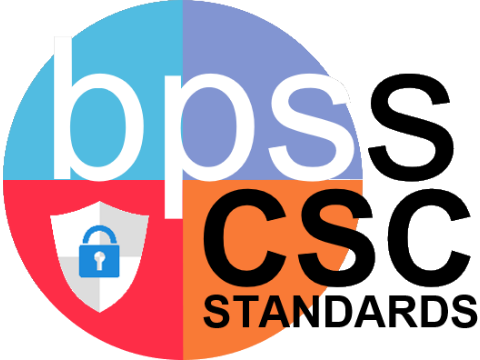BPS District Computer Science and Cybersecurity Standards Book
K-12 Grade Levels
Grade 12
CSC-12.TS TS Technology Systems
Sub-Concepts
(NI) Network & Internet - Networks link computers and devices locally and around the world allowing people to access and communicate information.
(HS) Hardware & Software - Devices, hardware, and software work together as a system to accomplish tasks..
(T) Troubleshooting - Strategies for solving technology system problems.
- CSC-12.TS_NI.1 Choose an appropriate network connection given a scenario or situation.
- CSC-12.TS_NI.2 Compare and contrast the benefits and security risks of networkable devices.
- CSC-12.TS_HS.1 Compare and contrast appropriate device/hardware/software to complete a task. (Continued growth)
- CSC-12.TS_HS.2 Identify and choose hardware and software to help protect a system. (CYSEC) (Continued growth)
- CSC-12.TS_HS.3 Implement redundancy. (CYSEC)
- CSC-12.TS_T.1 Implement systematic troubleshooting strategies to identify and fix errors.
CSC-12.CT CT Computational Thinking
Sub-Concepts
(PSA) Problem Solving & Algorithms - Strategies for understanding and solving problems.
(DCA) Data Creation & Analysis - Data can be collected, used, and presented with computing devices or digital tools.
(DD) Development & Design - Design processes to create new, useful, and imaginative solutions to problems.
- CSC-12.CT_PSA.1 Use and adapt common algorithms to solve computational problems.
- CSC-12.CT_DCA.1 Represent complex data using interactive data visualizations or computational models.
- none
CSC-12.IL IL Information Literacy
Sub-Concepts
(A) Access - Effective search strategies can locate information for intellectual or creative pursuits.
(E) Evaluate - Information sources can be evaluated for accuracy, currency, appropriateness, and purpose.
(C) Create - It is important to both consume and produce information to be digitally literate.
(IP) Intellectual Property - Respect for the rights and obligations of using and sharing intellectual property.
- CSC-12.IL_A.1 Build knowledge by actively exploring real-world issues and problems, developing ideas and theories and pursuing answers and solutions.
- CSC-12.IL_E.1 Explain source selection based on accuracy, perspective, credibility, and relevance of information, media, data, or other resources.
- CSC-12.IL_C.1 Exhibit perseverance, a tolerance for ambiguity, and the capacity to work with open-ended problems in the design and creation process.
- CSC-12.IL_IP.1 Debate laws and regulations that impact the development and use of software.
- CSC-12.IL_IP.2 Cite sources in a standard format to ethically reference the intellectual property of others. (Continued growth)
- CSC-12.IL_IP.3 Evaluate the social and economic implications of piracy and plagiarism in the context of safety, law, or ethics. (Continued growth)
CSC-12.CS CS Computers in Society
Sub-Concepts
(IC) Impacts of Computing - Past, present, and possible future impact of technology on society.
(SI) Social Interactions - Technology facilitates collaboration with others.
- CSC-12.CS_IC.1 Predict how computing may impact the workplace and personal lives.
- CSC-12.CS_SI.1 Evaluate the impact of equity, bias, access, and influence on the availability of computing resources in a global society.
CSC-12.DC DC Digital Citizenship
Sub-Concepts
(SE) Safety & Ethics - There are both positive and negative impacts in social and ethical behaviors for using technology.
(RU) Responsible Use - Respect and dignity in virtual communities.
(DI) Digital Identity - Responsibilities and opportunities of living, learning and working in an interconnected digital world.
- CSC-12.DC_SE.1 Understand encryption and how it is used to protect data. (CYSEC) (Continued Growth)
- CSC-12.DC_SE.2 Illustrate how sensitive data can be affected by malware and other attacks. (CYSEC)
- CSC-12.DC_SE.3 Manage personal data to maintain digital privacy and security and are aware of data-collection technology used to track online behaviors. (CYSEC) Continued Growth)
- CSC-12.DC_SE.4 Develop a plan to recover from an incident that was tied to unauthorized access. (CYSEC) (Continued Growth)
- CSC-12.DC_RU.1 Apply cyberbullying prevention strategies. (Continued growth)
- CSC-12.DC_RU.2 Apply safe and ethical behaviors to personal electronic communication and interaction. (CYSEC) (Continued growth)
- CSC-12.DC_RU.3 Use appropriate digital etiquette in a variety of situations. (Continued growth)
- CSC-12.DC_RU.4 Understand the purpose of and comply with Acceptable Use Policies.
- CSC-12.DC_DI.1 Manage a digital identity and be aware of the permanence of actions in the digital world. (CYSEC) (Continued growth)





